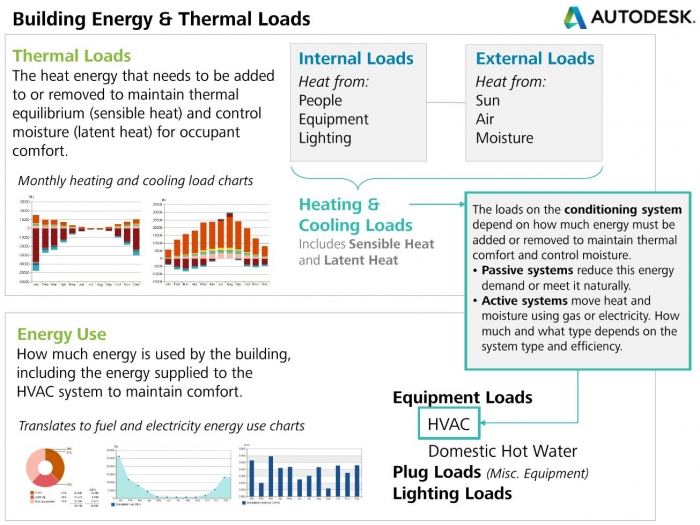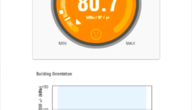You are here
Energy loads are how much energy your building needs. These demands can be provided by electricity, fuel, or by passive means. Understanding building loads can be a complex topic because there are so many interrelated terms to navigate.
The infographic below can help you navigate these terms and make better sense of building performance analysis results.
 |
Thermal loads are the quantity of heating and cooling energy that must be added or removed from the building to keep people comfortable. Thermal loads come from heat transfer from within the building during its operation (internal, or core loads) and between the building and the external environment (external, envelope, or fabric loads).
These thermal loads can be translated to heating loads (when the building is too cold) and cooling loads (when the building is too hot). These heating and cooling loads aren’t just about temperature (sensible heat), they also include moisture control (latent heat). (See Infiltration & Moisture Control)
Heating and cooling loads are met by the building’s HVAC system, which uses energy to add or remove heat and condition the space. This energy use translates to the HVAC component of a building’s equipment loads (met by fuel or electricity). Other building loads include plug loads (electricity used for computers and appliances) and lighting loads (electricity used for lights).


